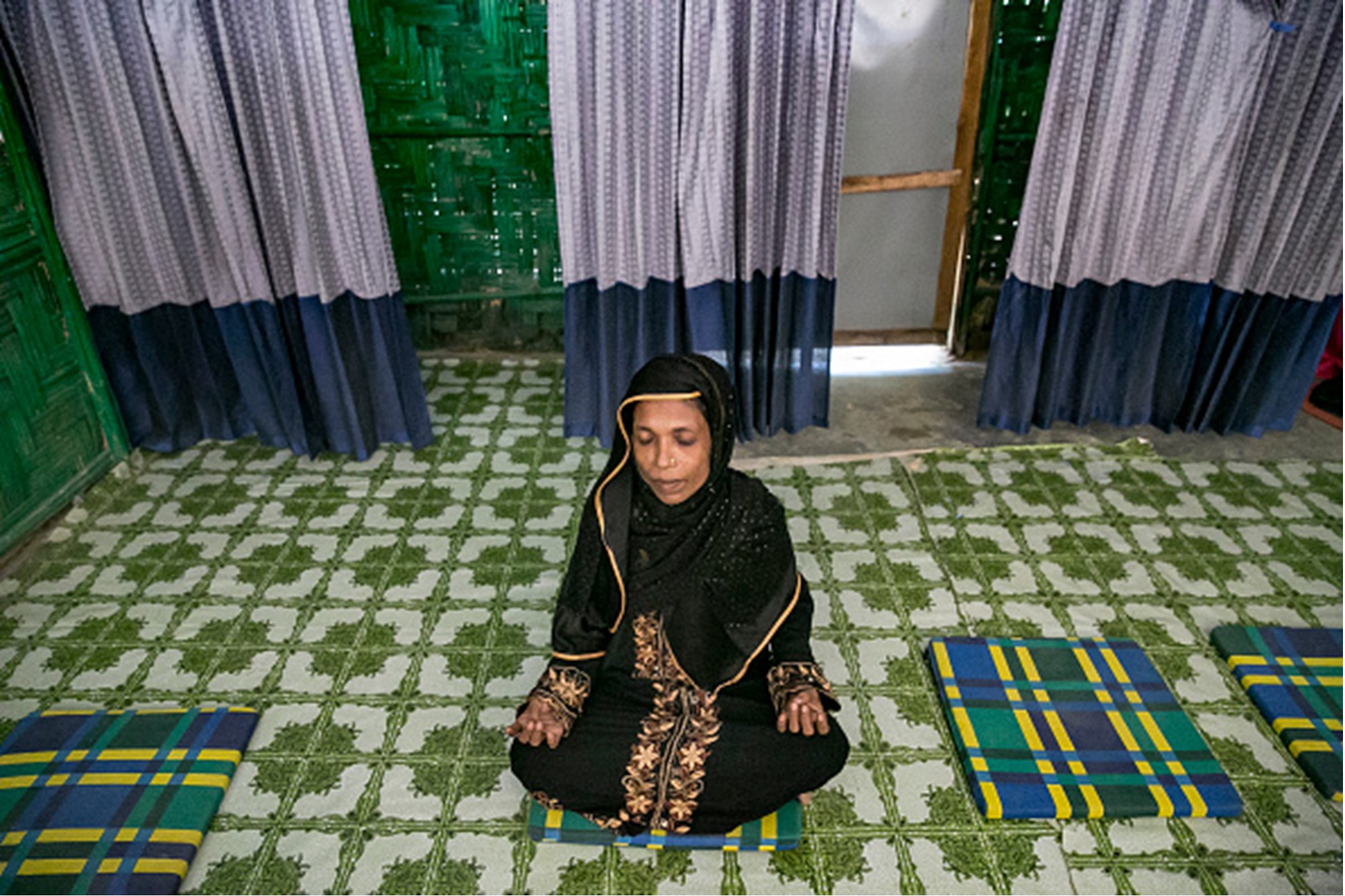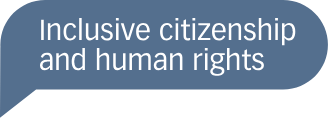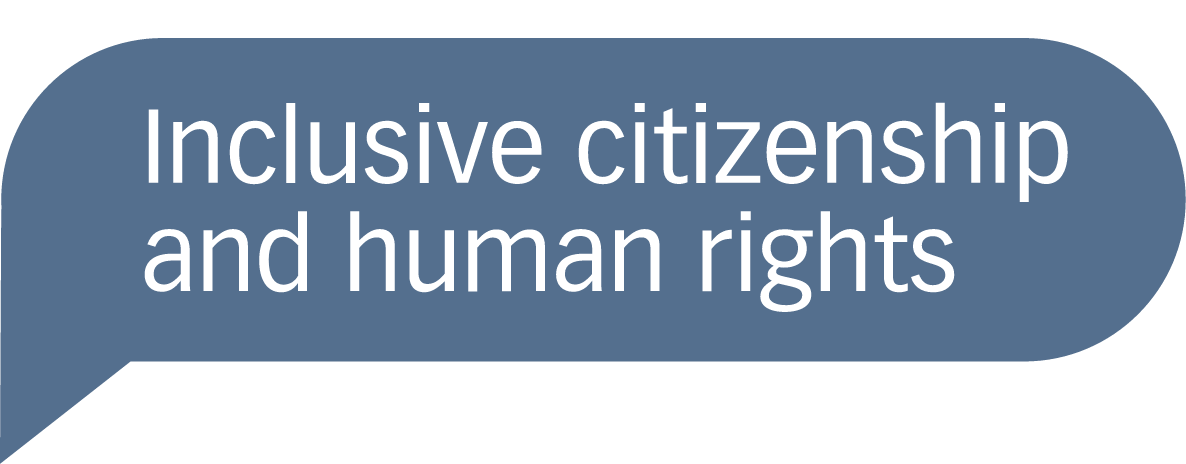
Gender plays a crucial role in both atrocities and their prevention; however, it is often overlooked in many atrocity prevention efforts and can result in ineffective prevention. Gender does not just mean “women” either, but also men, non-binary people, and the broader dynamics of how gender influences societies. Gender-sensitive frameworks should be used to improve atrocity prevention, legal frameworks, risk assessment and accountability.
On this page, we look at how a gender-sensitive approach to mass atrocities improves traditional atrocity prevention practices and frameworks, and how gender is interlinked with genocide. Through a gender lens, we outline the connections between atrocity prevention, Women, Peace and Security, gendercide, and sexual- and gender-based violence.
Pramila Patten: Gender Perspectives in Genocide Prevention Strategies
Gender affects many aspects of mass atrocities. Here are some:
- Preparation of atrocities: How victims are chosen, perpetrators are mobilized, and violence is justified through narratives;
- Warning Signs: Which risks are considered and which indicators are monitored;
- Crimes and roles: The types of crimes committed, who they target, and the roles of victims, perpetrators, and rescuers;
- Investigations: What the goal and scope of fact-finding missions is;
- Accountability: Legal processes and their legal consequences;
- Research: How atrocities are studied.
Gender and genocide
Genocides, like all mass atrocities, have strong gender dimensions. Which perpetrators commit genocide and against which victims, as well as how the crimes are addressed by outside actors, are influenced by gendered dynamics and socio-cultural norms.
Some genocides have been carried out in explicitly gendered ways, weaponizing sexual- and gender-based violence as a purposeful violent tactic. This has been the case for the Rwandan genocide directed against the Tutsi and the systemic sexual violence in the Bosnia in the 1990s.
Jacqui True, Director of the Australian Research Council Centre of Excellence for the Elimination of Violence against Women (CEVAW), explores how insights from the Rwandan genocide have contributed to atrocity prevention, particularly from a gender perspective
Among all atrocity crimes, genocide can have a particular gender dimension due to perpetrators’ goal of destroying groups. For instance, genocidal violence can target the victim groups’ ability to reproduce – destroying group survival in the long run. The importance of reproduction as part of group survival is even recognized by the Genocide Convention, which identifies “measures intended to prevent births within the group” and “forcibly transferring children of the group to another group” as acts of genocide.
Gender can manifest at all levels of a genocide. For example, gender can influence the language used to rally and mobilize perpetrators, any sexual violence committed (be it gender-specific or gender-blind), which group is chosen as victims, and even who is granted agency as a perpetrator or peacemaker. Similarly, gender norms are created and reinforced to normalize violence and justify the need to commit certain crimes.
A common narrative used to mobilize male perpetrators is the protection of their group’s women from an existential threat, while women’s mobilization typically relies on their role as community heads and mother figures. Sexual violence is similarly used to hurt groups and individuals: due to cultural norms victims are often shamed and rejected by their community, and by impregnating opposing groups’ women perpetrators can forcefully affect the ethnic composition of a group. Consequently, these atrocities also affect the next generation of children born of this violence.
Naturally, there are many examples of people defying these strict roles and narratives, challenging basic and binary understandings of gender and genocidal intent. Which groups are deemed vulnerable or violent is often determined by essentialist gender norms, so having a nuanced outlook on how mass violence is committed and who can commit it is crucial.
“Gendercide”
The prevalent and repeated presence of gendered acts and rhetoric in mass violence led to a term being coined: gendercide. According to Mary Anne Warren, “gendercide is the systematic killing of members of a specific gender”, and “is often a component of a wider genocide”. This term has been met with both criticism and praise: although it may obscure deeper intersecting dynamics in favor of a reductive understanding of mass violence, it adds a more nuanced outlook on perpetration and victimhood than a gender-blind analysis of mass violence.
Gender dimensions of atrocity prevention
Gender influences the preparation, perpetration, prevention, and punishment of mass atrocities. Still, the consideration of gender in prevention efforts remains limited. Understanding the crucial role gender plays in atrocities is necessary to ensure that atrocities can be – and are – prevented.
Normative approaches and political frameworks with a focus on gender already exist, such as the UN Women, Peace, and Security (WPS) agenda, but they typically lack an atrocity prevention perspective. Atrocity prevention frameworks like the Responsibility to Protect (R2P) have yet to mainstream and incorporate gender dimensions.
Savita Pawnday on Gender & Atrocity Prevention
Incorporating a nuanced gender-sensitive perspective on prevention updates and refines existing frameworks and practices, improving the capacity to identify and target risk factors that would otherwise go unnoticed.
There are many gendered factors within atrocities and their prevention, as gender influences their every aspect, but it mainly manifests by affecting:
- Which crimes are committed (gender apartheid, slavery and trafficking, sexual violence, genocide)
- Which groups are mobilized and against whom (following societal norms and cultural narratives)
- Which resistance actors and institutions oppose atrocities (individuals, communities, accountability mechanisms)
Consequently, gender adds a layer of complexity to the driving forces behind atrocities. This requires targeted and nuanced prevention efforts. Monitoring instruments and analysis frameworks must be aware of these nuances, and they should be continuously updated to be sensitive to these specific gender dimensions.
Frameworks and legislation that recognize the importance of gender can better identify perpetrators, victims, and rescuers, in turn improving accountability, research, and mediation efforts. In the aftermath of atrocities, fact-finding missions and post-atrocity analyses also benefit from a comprehensive and nuanced outlook on atrocities. The Women, Peace and Security (WPS) agenda is an example of how recognizing the centrality of gender can improve conflict prevention and civilian protection, but this perspective is not yet mainstreamed in atrocity prevention.
Strengthening Women, Peace and Security through an atrocity lens
In the fields of conflict prevention and resolution, the awareness of gender dynamics and the inclusion of women have been strengthened by the Women Peace and Security (WPS) agenda and gender-sensitive approaches to conflict. This agenda is closely related to atrocity prevention through the aim of protecting civilians, yet the connection between these policy fields is weak. Here are some of the many ways an atrocity prevention lens can benefit the Women, Peace and Security agenda and gender-sensitive approaches to conflict.
The WPS agenda has a prevention pillar which calls for stronger accountability, legal frameworks, and support for preventive and peacemaking initiatives, encouraging preventive measures at all stages of implementation. Policymakers, diplomats, researchers, and activists engaged in WPS should draw on analytical and political frameworks developed in the atrocity prevention field.
The WPS and atrocity prevention fields should also inform one another in their efforts of mapping insecurity and violence (also including sexual violence). Atrocity prevention approaches include early warning and risk assessment projects, while the WPS field publishes the Women, Peace and Security Index every year, statistically measuring the safety, inclusion, and discrimination faced by women globally.
Indeed, gender-sensitive prevention frameworks such as the Asia-Pacific Centre for R2P’s (2022) Overview of Gender Responsive Early Warning Systems include warning indicators such as:
- Decreasing access to healthcare, economy, and society;
- Increasing discrimination, (sexual) violence, and hate speech;
- Political Violence Targeting Women (PVTW), including politicians, journalists, and activists.
Ensuring collaboration between key actors and researchers in the fields of WPS and atrocity prevention can help prevent gender-based violence more effectively. Also, atrocity prevention holds a strong normative obligation and call for action through the Responsibility to Protect (R2P) doctrine, which can be utilized in the WPS field to prevent gender-based atrocities.
Additional readings
Here are more readings on gender-sensitive approaches to genocide studies and atrocity prevention:
- Allen, Louise. 2021. “Overview of Gender Responsive Early Warning Systems – Progress and Gaps.” Asia Pacific Partnership for Atrocity Prevention. https://r2pasiapacific.org/files/8174/2022_APPAP_Gender_EWER_overview.pdf.
- Allen, Louise. 2021. “Gender-Based Atrocity Crime Prevention.” Asia-Pacific Centre for the Responsibility to Protect. Brisbane, Australia. https://r2pasiapacific.org/files/7493/2021_Gender-based_atrocity_crime_prevention.pdf.
- Connellan, Mary Michele. 2018. “The Problem of ‘Protecting Vulnerable Groups.’ Rethinking Vulnerability for Mass Atrocity and Genocide Prevention.” In A Gendered Lens for Genocide Prevention. London: Palgrave Macmillan UK. https://doi.org/10.1057/978-1-137-60117-9_2.
- Davies, Sara E., and Alex J. Bellamy. 2018. “WPS and the Responsibility to Protect.” In The Oxford Handbook of Women, Peace, and Security, edited by Sara E. Davies and Jacqui True, 585–97. Oxford Handbooks. https://doi.org/10.1093/oxfordhb/9780190638276.013.44.
- Joeden-Forgery, Elisa. 2012. “Gender and the Future of Genocide Studies and Prevention.” Genocide Studies and Prevention: An International Journal 7 (1). https://digitalcommons.usf.edu/gsp/vol7/iss1/10.
- Jones, Adam. 2000. “Gendercide and Genocide.” Journal of Genocide Research 2 (2): 185–211. https://doi.org/10.1080/713677599.
- Jones, Adam. 2008. “Gender and Genocide.” In The Historiography of Genocide, 228–52. Palgrave Macmillan. https://doi.org/10.1057/9780230297784_9.
- Jones, Adam. 2024. Genocide: A Comprehensive Introduction. 4th ed. London; New York: Routledge, Taylor & Francis Group.
- Teitt, Sarah. 2019. “Centralising Gender in Atrocity Prevention.” Asia-Pacific Centre for the Responsibility to Protect. Brisbane, Australia. https://espace.library.uq.edu.au/view/UQ:9d66a76/CentralisingGenderAtrocityPrevention.pdf?dsi_version=223ecf54ef1380ec8f7c1b86601eea8e.
Related Resources
Find digital tools produced in cooperation with partners and researchers from different regions.
Coverphoto: by Andrew Renneisen/Getty Images



